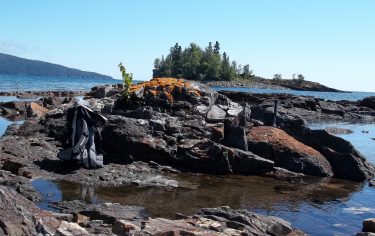
Conditions suitable to support complex life may have developed in Earth’s oceans — and then faded — more than a billion years before life truly took hold, a new University of Washington-led study has found.
The findings, based on using the element selenium as a tool to measure oxygen in the distant past, may also benefit the search for signs of life beyond Earth.
In a paper published Jan. 18 in the Proceedings of the National Academy of Sciences, lead author Michael Kipp, a UW doctoral student in the UW’s Department of Earth and Space Sciences, analyzed isotopic ratios of the element selenium in sedimentary rocks to measure the presence of oxygen in Earth’s atmosphere between 2 and 2.4 billion years ago.
Kipp’s UW coauthors are former Earth and space sciences postdoctoral researcher Eva Stüeken — now a faculty member at the University of St. Andrews in Scotland — and professor Roger Buick, who is also a faculty member with the UW Astrobiology Program. Their other coauthor is Andrey Bekker of the University of California, Riverside, whose original hypothesis this work helps confirm, the researchers said.
Read more at UW Today »
